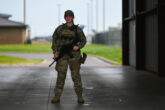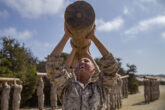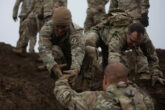September 03, 2025
Defending the Army’s Command Assessment Program
This article was originally published in Army Times
In the U.S. Army, the job of a battalion or brigade commander is to compel a group of human beings to resist their natural urge toward survival and self-preservation in the name of protecting the nation’s security at the precise moment of crisis — to compel their subordinates to lay down their lives for another.
To lead in the pitch of battle, the Army needs commanders who meet the highest standards. The Command Assessment Program (CAP) — developed during the first Trump administration — was always about these standards. First applied to battalion command selection at the O-5 (lieutenant colonel) level through the Battalion Commander Assessment Program (BCAP), CAP expanded to assess and select brigade commanders at the O-6 level (CCAP) and later expanded to the enlisted ranks through the Sergeant Major Assessment Program (SMAP).
The concept for CAP — developed during the first Trump administration — benefited from the guidance, input and oversight from the foremost scholar and practitioner on military talent management who wrote the book on Army talent management.
The minimum requirements for commanders who excel as individual performers are peak physical fitness, basic branch proficiency and a proven track record of performance at every prior echelon. The Army produces more of these individuals every year than it has command billets to fill. And so, the Army must not only identify those who have a proven track record of individual performance — that’s table stakes — it must also cull and winnow the list of officers with the additional capabilities to lead the soldiers under their charge in the heat of battle.
To make those tough leadership choices, the Army must identify those individuals with the knowledge, skills, behaviors and other attributes that make them fit for command. It’s simply not enough to be an exceptional individual performer: Commanders (and their sergeants major) need to be a step above in mastering human performance, not only their own, but the hundreds or thousands of soldiers under their command. To be entrusted with command, the Army needs to know more about those being considered. In addition to their PT scores and performance records, how well do these officers and NCOs communicate? What is their level of emotional intelligence? Do they have a stellar reputation among their superiors, but demonstrate untrustworthy behavior among their peers, or kick down on their subordinates? Does this officer or NCO demonstrate leadership in word and deed? Have they mastered their own self-discipline such that they compel those around them to do the same? Would you trust your life to this officer’s ability to lead in combat?
Read the full article on Army Times.
More from CNAS
-
National Security Human Capital Program
‘Women Don’t Just Achieve…They Excel’: Fmr. Marine Corps Attack PilotDr. Kyleanne Hunter, former Marine Corps attack pilot and CEO of Iraq & Afghanistan Veterans of America, says “women are the fastest growing group of veterans” and “the fastes...
By Dr. Kyleanne Hunter
-
National Security Human Capital Program
Could the U.S. Bring Back the Draft?In this episode of At the Boundary, GNSI’s Dr. Guido Rossi sits down with Katherine Kuzminski, Director of Studies at the Center for a New American Security (CNAS), to explore...
By Katherine L. Kuzminski
-
National Security Human Capital Program
Hegseth Brings the Culture War to CombatThe fundamental challenge of military leadership lies in creating cohesive teams that can work together in an environment of mortal risk and, when called upon to do so, use le...
By Dr. Jason Dempsey
-
National Security Human Capital Program
Hegseth Says Trump Boosted Military Recruiting. It’s Been Improving for over a YearDefense Secretary Pete Hegseth says military recruiting has shot up since the Trump administration's return. In fact, it's been improving for at least a year, with big jumps i...
By Taren Sylvester




